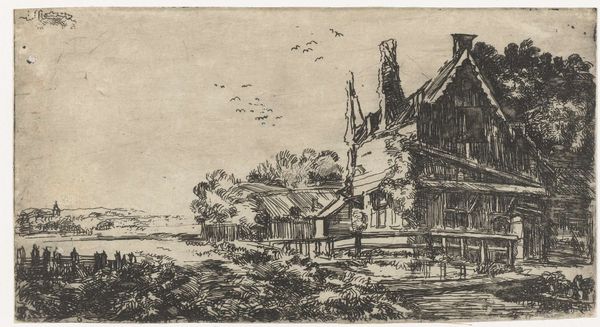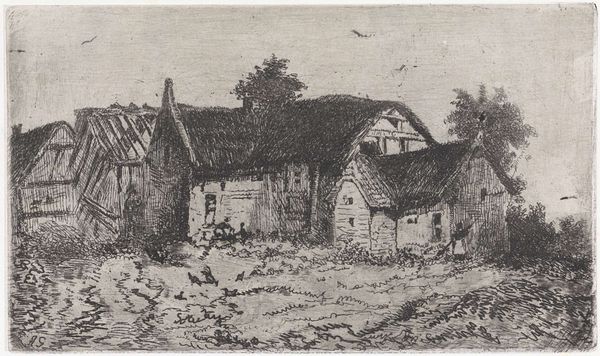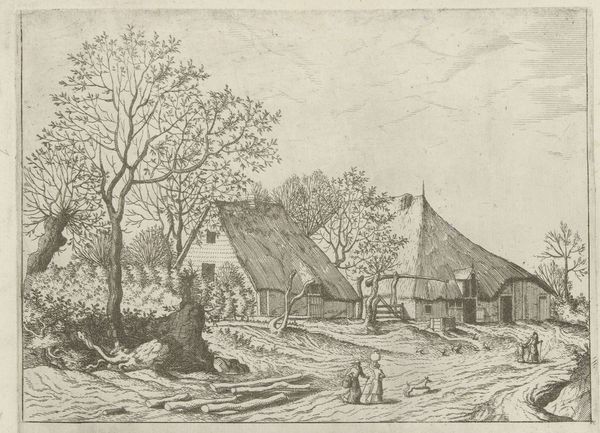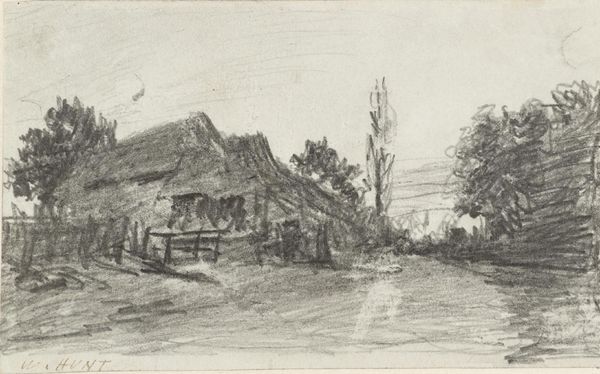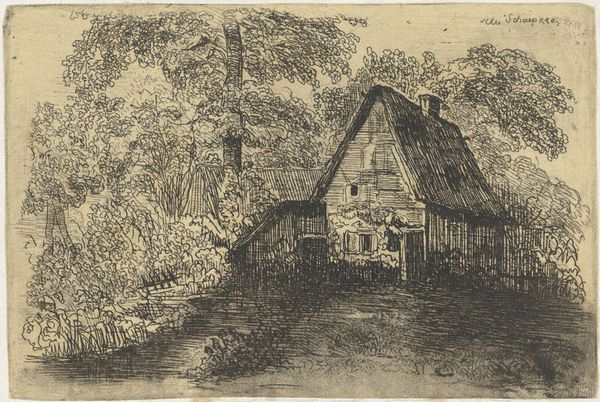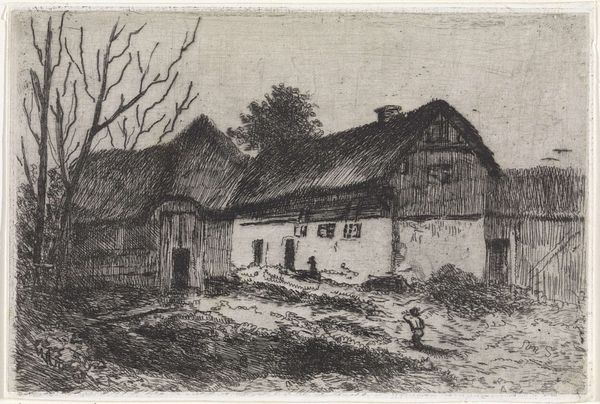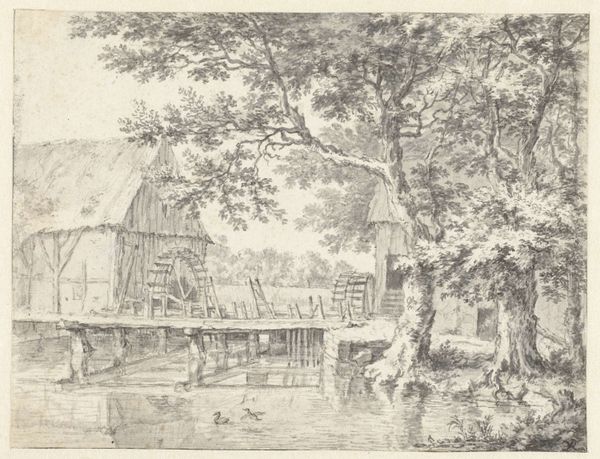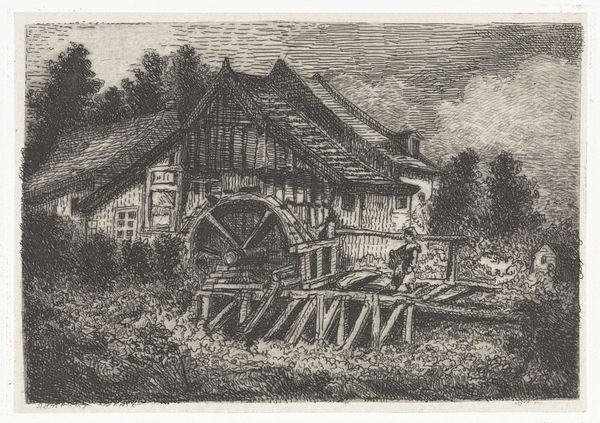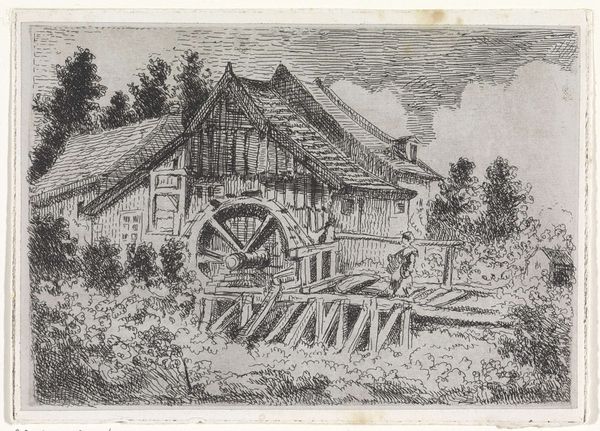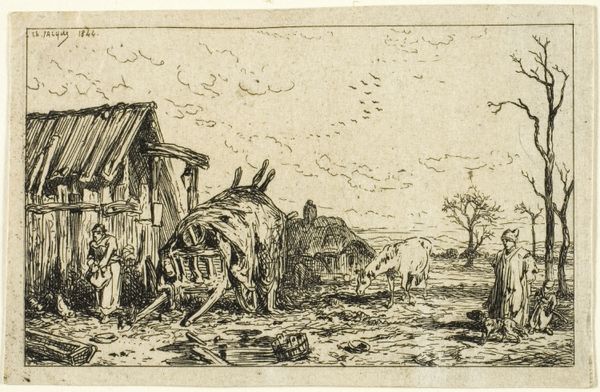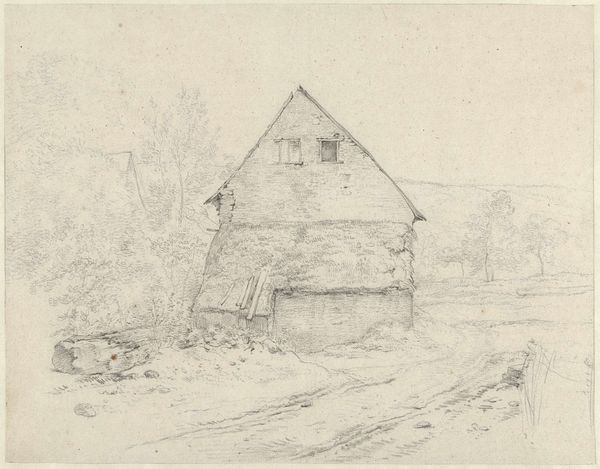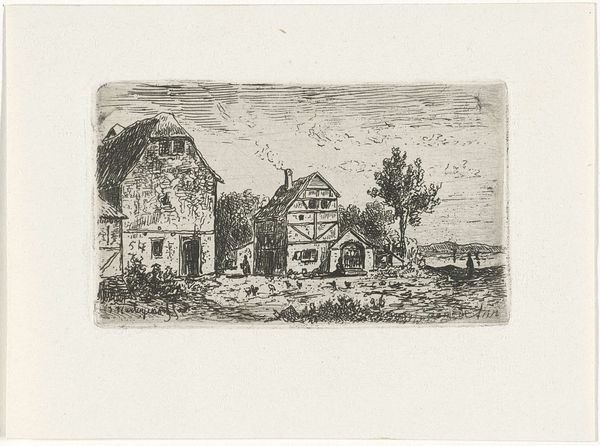
drawing, etching, ink
#
drawing
#
etching
#
landscape
#
ink
#
realism
Dimensions: height 119 mm, width 193 mm
Copyright: Rijks Museum: Open Domain
Curator: Before us is “Watermolen” by Arnoud Schaepkens. We believe this drawing was etched sometime between 1855 and 1904. Editor: My first impression is how utterly bucolic this scene feels. The heavy thatched roof, the dense foliage practically consuming the structure. It feels like a world suspended. Curator: Indeed, the watermill itself, traditionally a site of labor and industry, appears almost reclaimed by nature. In the Western psyche, the mill carries multifaceted symbolism: industriousness, certainly, but also cycles of life and, occasionally, entrapment. What readings do you infer? Editor: I'm interested in the artist’s choice to render it through etching, really emphasizing the process. The very fine lines feel incredibly time-intensive, right? Which feels poignant given the way the scene evokes the passing of time. What labor went into creating such a small, intimate piece of art? What impact might its original creation have had within its community? Curator: An interesting query regarding craft. Note also how the reflections in the water are delineated. Rather than perfectly mirroring the structure, the artist hints at, perhaps, impermanence. This contrasts sharply with the building itself. Editor: It’s that tension between human labor and natural reclamation. The rigid, geometrical lines of the architecture fighting against the organic rendering of the surrounding nature, right? It's interesting. Curator: A dichotomy reflective of the societal tension present in Schaepkens' period as society shifted further towards industry, perhaps. The image embodies this turning point. Editor: Right. It seems the watermill itself symbolizes labor's own cycle, a cycle dependent upon—and inevitably absorbed by—the very natural world it exploits for production. Curator: Food for thought on what otherwise seems like a simple rural scene. Editor: Exactly, reminding us that the simplest-seeming scenes are always rich in process, thought, and symbol.
Comments
No comments
Be the first to comment and join the conversation on the ultimate creative platform.
